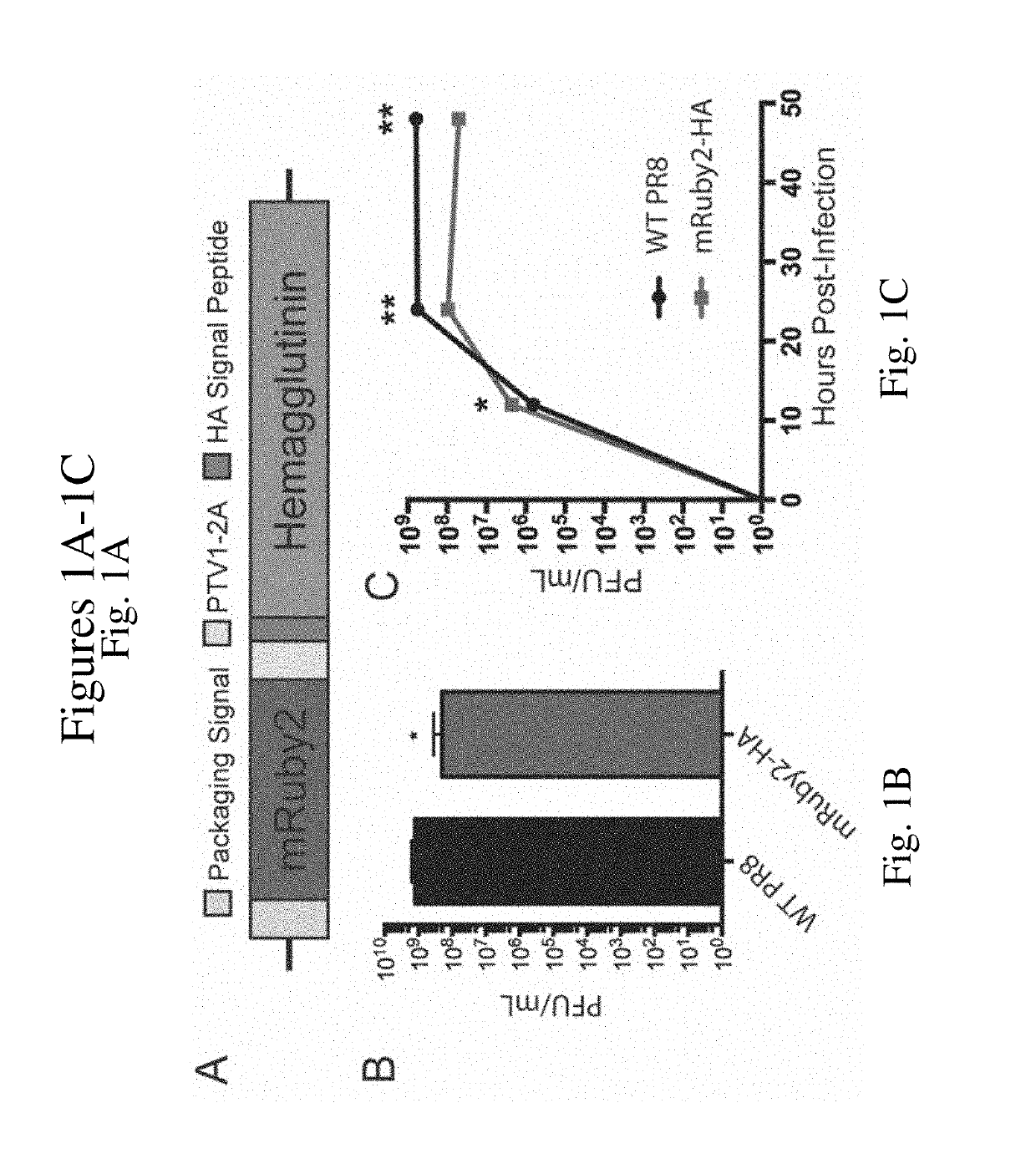Engineered influenza polynucleotides, viruses, vaccines and methods of making and using the same
a technology of engineered influenza and polynucleotides, which is applied in the field of engineered influenza polynucleotides, viruses, vaccines and methods of making and using the same, can solve the problems of poor infectivity, delay in vaccine production, and delay in the production process, so as to prevent or reduce the symptoms of influenza in a subject and reduce the symptoms of influenza
- Summary
- Abstract
- Description
- Claims
- Application Information
AI Technical Summary
Benefits of technology
Problems solved by technology
Method used
Image
Examples
example 1
Rationally Designed Influenza Virus Vaccines that are Antigenically Stable During Egg Growth
Results
[0127]To improve the vaccine production process, we decided to generate a replication competent IAV that incorporated two different HA proteins onto the same virion. We reasoned that by pairing a laboratory adapted HA with a second HA protein, derived from a circulating pathogenic IAV strain, we could ensure robust growth of the resultant IAV regardless of the growth characteristics of the second HA and thereby reduce the selective pressure on this HA to mutate.
[0128]To accomplish this goal we needed to establish a genomic organization that would encode two functional HA proteins. There have been reports of successful exogenous expression of foreign reporter proteins from the polymerase segments as well as IAV segments 8 and 6 (reviewed in (18, 19)). All of the previously published reports, however, either generated viral-reporter fusion proteins or left residual amino acids that would...
example 2
Packaging and Delivery of Heterologous Polypeptides in Engineered Influenza Viruses
[0161]To investigate whether other heterologous polypeptides besides hemagglutinin (HA) could be packaged and expressed in influenza viruses, we introduced separately a TmZsGreen polypeptide including the ZsGreen protein with a transmembrane from the influenza NA protein and the full-length E protein from Zika virus into pDZ plasmids. The TmZsGreen polypeptide was introduced into a pDZ plasmid encoding segment 4 of an influenza virus. See FIG. 15A. The TmZsGreen polypeptide could also have been introduced into a pDZ plasmid encoding segment 6 of an influenza virus and cotransfected with a pDZ plasmid encoding HA and NA in segment 4. See FIG. 15B. The E protein from Zika virus was introduced into a pDZ plasmid encoding segment 6 of an influenza virus and was cotransfected with a pDZ plasmid encoding HA and NA in segment 4. These pDZ plasmids were transfected into 293T cells along with pDZ plasmids enco...
PUM
| Property | Measurement | Unit |
|---|---|---|
| Current | aaaaa | aaaaa |
| Knoop hardness | aaaaa | aaaaa |
| Composition | aaaaa | aaaaa |
Abstract
Description
Claims
Application Information
 Login to View More
Login to View More - R&D
- Intellectual Property
- Life Sciences
- Materials
- Tech Scout
- Unparalleled Data Quality
- Higher Quality Content
- 60% Fewer Hallucinations
Browse by: Latest US Patents, China's latest patents, Technical Efficacy Thesaurus, Application Domain, Technology Topic, Popular Technical Reports.
© 2025 PatSnap. All rights reserved.Legal|Privacy policy|Modern Slavery Act Transparency Statement|Sitemap|About US| Contact US: help@patsnap.com



